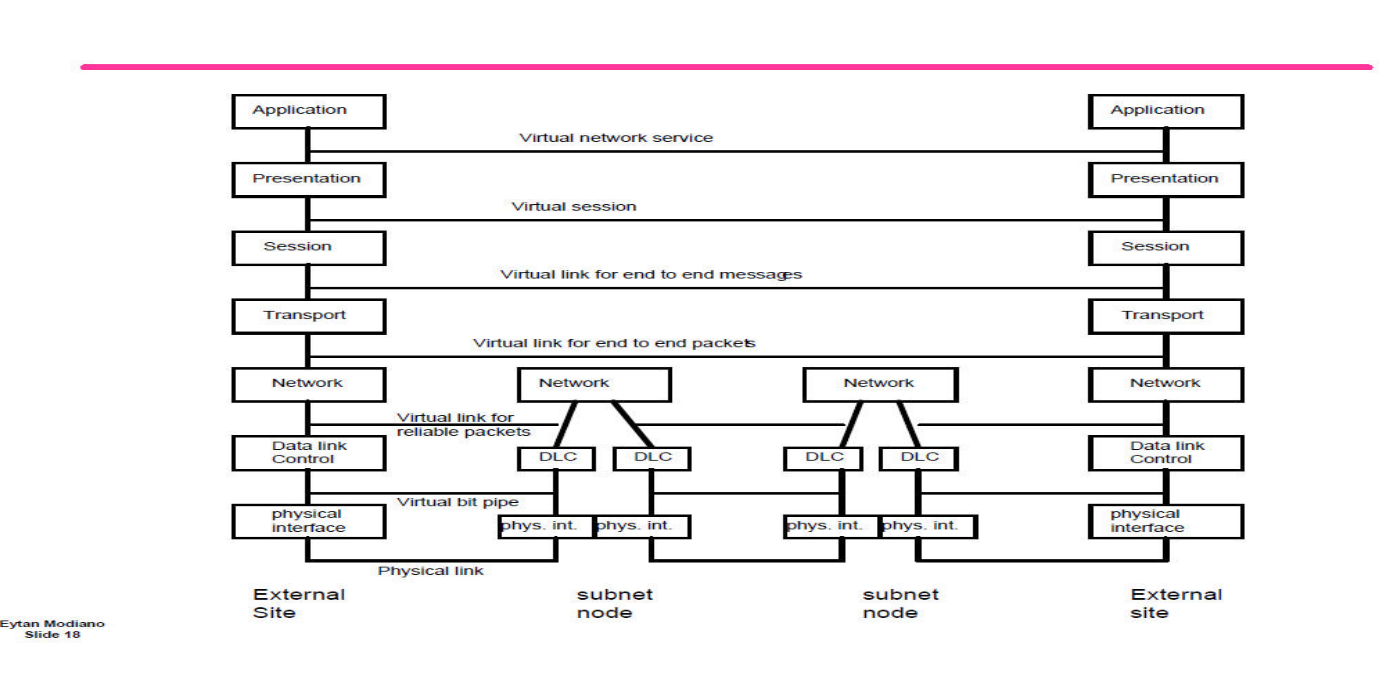OSI Seven Layer Model
See Protocol Layers:
The Open System Interconnection (OSI) Standard uses the following layers:
- Physical Layer (layer 1)
- Defines what high-low means (for
0or1)
- Defines what high-low means (for
- Data Link Layer (layer 2)
- Responsible for getting the data across one hop
- Error detection, error correction, flow control, and framing (grouping the data plus the layer 2 header)
- Network Layer (layer 3)
- Routes (picks the path across the network (depends on the network), picks the outgoing link)
- Transport Layer (layer 4)
- Operates end-to-end (considering the whole network)
- Handshake Protocol (Connection Oriented)
- Error Detection, error correction, flow control (so it does it at the very end, once we've reached the device we needed to)
- Reliable connection
- Session Layer (layer 5) (supports user connections, authentication)
- Presentation Layer (layer 6) (provides general solutions to common requests, like encryption, compression)
- Application Layer (layer 7) (provides access for users and applications)
